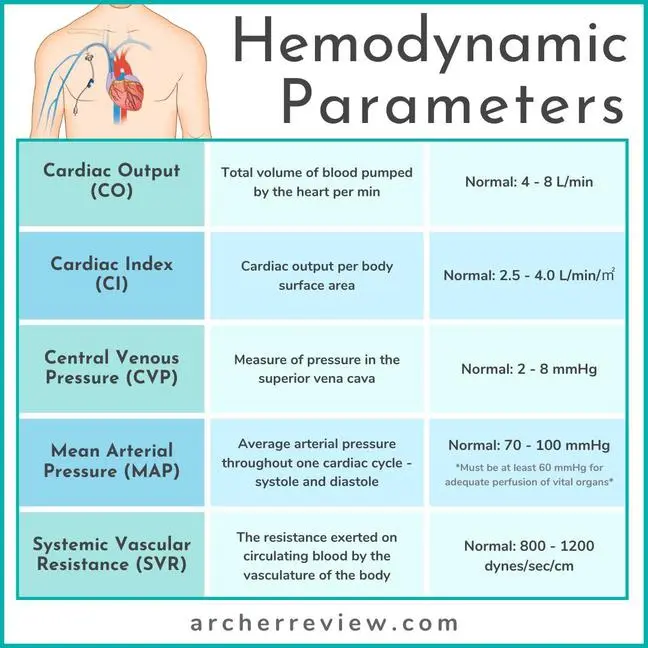article
NCLEX Topics
3y
article
Let's talk about a more advanced concept - hemodynamic parameters!
What are they?? In short, hemodynamic parameters are numbers that tell you about the flow and pressure of blood around your body.
Blood enters the right atrium of your heart through the superior and inferior vena cava. The pressure here is known as the Central Venous Pressure (CVP). Since this is blood returning from the venous system, it's lower in pressure; normal is only about 2-8 mmHg!
Blood then leaves the right side of the heart, goes to the lungs, comes back to the left side, and is then sent throughout the body! Systemic Vascular Resistance is the pressure exerted on the vasculature of the body, and is what the left ventricle is pumping against to get blood out of your heart! This is much higher - 800-1200 dynes/sec/cm. This is pretty hard to measure though, so we often look instead at the Mean Arterial Pressure (MAP). This is the average arterial pressure throughout the entire cardiac cycle, and can be easily calculated based on the patient's blood pressure! For adults, normal is 70-100, and we need a MAP of at least 60 to get perfusion to vital organs like the brain and kidneys!
Sending that blood forward is the main goal of the cardiovascular system. The Cardiac Output is the total volume of blood pumped out by the heart per minute, and the Cardiac Index is that number divided by the body surface area to adjust for different normals in different size patients. If the cardiac output is low.... our organs are not getting oxygen!
Do you understand these hemodynamic parameters?? Drop your questions below!
0 Shares
